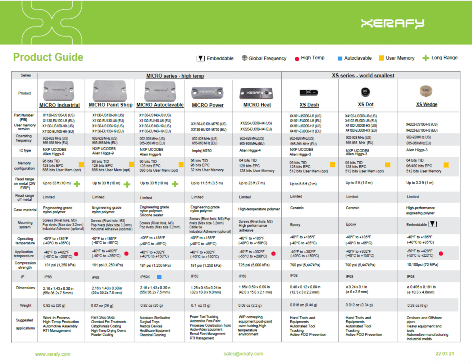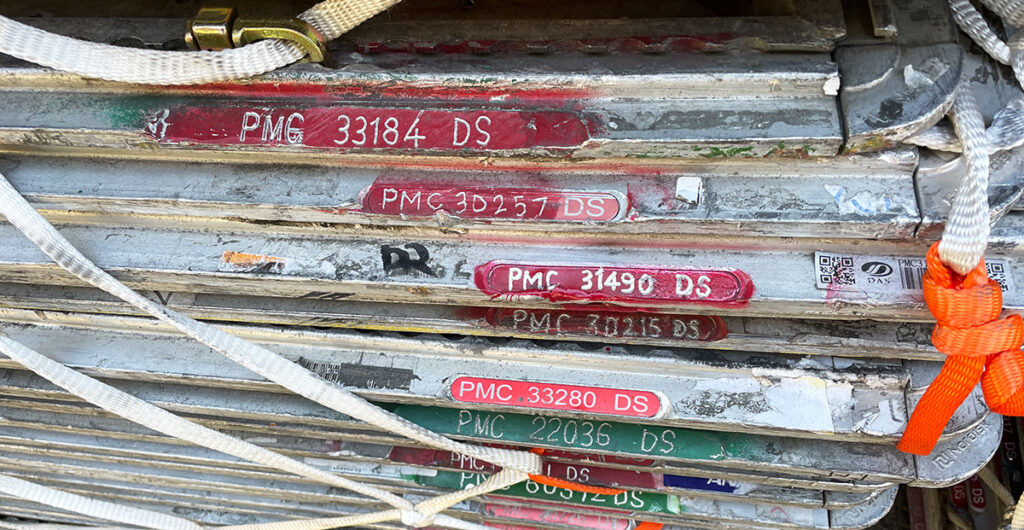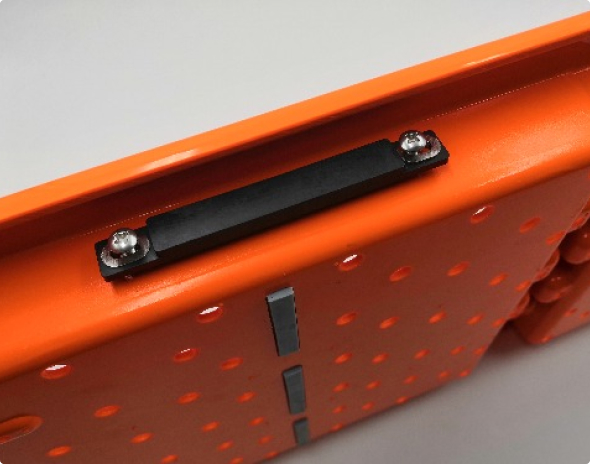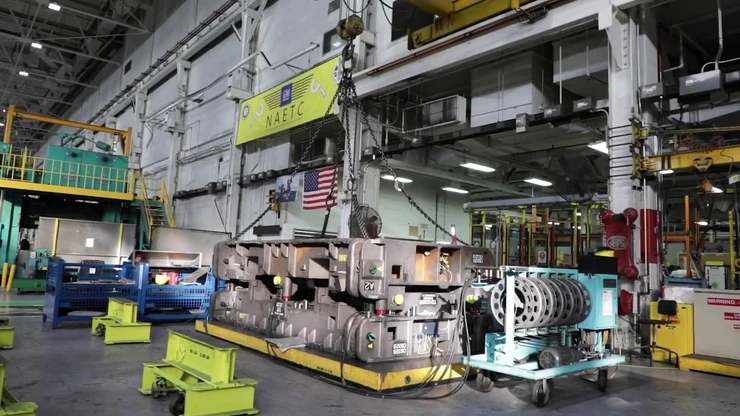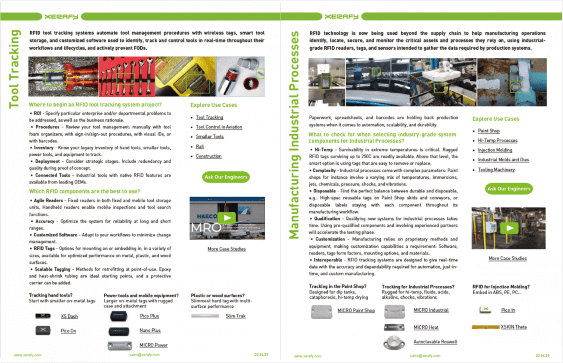BLE series
Rugged BLE Tracking for Extended Range and Active Asset Visibility
The Xerafy BLE series offers an advanced active tracking platform designed to enhance asset utilization and streamline operations. With real-time tracking capabilities, the rugged beacons ensure seamless asset tracking, automated inventory, and supply chain visibility in healthcare, manufacturing, and construction.
The devices leverage the infrastructure-light IOT technology with smartphones and fixed gateways, simplifying both deployment and management. Engineered for exceptional long-range performance, the beacons excel in various environments—indoors and outdoors, even through walls and floors. They are designed to deliver reliable performance in high-density settings with minimal maintenance. The low-power consumption not only extends the operational life of the devices but also reduces overall operational expenses.
Co-developed in collaboration with Fortune 500 companies, the Xerafy BLE series combines industry-leading technology with industrial insights. This ensures that our beacons meet the highest standards of performance and reliability in the field.
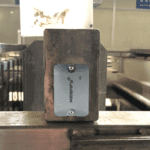
“We love Xerafy’s range of special metal tags, which never let us down in any of our projects, especially for demanding production environments.”
With the BLE series, the award-winning Xerafy engineering team delivers real-time active tracking capabilities combined with rugged form factors designed for demanding industrial applications. Available in both a rugged tag version and an autoclavable variant for repeated reprocessing and sterilization, these beacons are optimized to provide precise and reliable asset tracking in high-density and complex environments.
The BLE beacons excel in both indoor and outdoor settings, including operation through concrete walls and floors. Their low-power consumption technology minimizes maintenance needs and reduces overall operational costs. Additionally, the rugged design ensures secure mounting and readiness for immediate deployment.
These features enable the Xerafy BLE series to seamlessly integrate into existing asset management frameworks, offering cost-effective, infrastructure-light tracking solutions.
The rugged beacons in the BLE series can be supplemented in the field with a variety of IoT devices and RFID tags, offering comprehensive asset tracking solutions tailored to diverse needs and environments. Complementary options include the OUT TRAK Series for long-range tracking, the NFC Series for NFC tracking, the XENSE Series for passive sensing, and several autoclavable tags in the RUGGED Series.
BLE Beacons That Stand Out
The BLE series of bluetooth low energy beacons are engineered to offer tracking solutions optimized to perform in complex systems
Smartphone
Infrastructure-light technology
Battery-free
Long-life passive tracking devices
Durable
Designed for industrial durability
Read-Range
Combined with UHF RFID for longer range
Customization
Printed and encoded for unique identification
Cost-Effective
Solutions available for a variety of assets
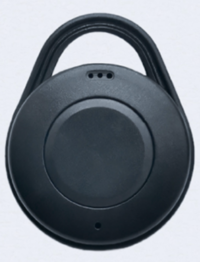

How to Print, Mark, Encode
The BLE Tags?
All tags in the BLE series can be fully
personalized to support the deployment of your tracking system
Printing
Silk-screen printing options include logo, serial numbers
Marking
Durable engraving with case color optimized for optical readability
Encoding
User memory versions for
encoding and programming
Engineering
Custom options: Industrial adhesives, mounting systems...
Case Studies
BLE beacons bring a consumer technology with an established industrial standard, to enable new tracking applications
FAQs Active Tracking with BLE Series
What is bluetooth low energy (BLE)?
BLE, or Bluetooth Low Energy, is a wireless communication technology designed for short-range, low-power data transmission. Unlike classic Bluetooth, BLE is optimized for minimal power consumption, making it ideal for battery-operated devices such as beacons, sensors, and wearables. BLE operates in the same 2.4 GHz frequency band as classic Bluetooth but uses a different protocol to extend battery life and enhance efficiency. It enables devices to communicate with each other over short distances, providing a reliable and energy-efficient solution for applications like asset tracking, health monitoring, and smart home devices.
What is BLE tracking used for?
BLE tracking is used for real-time monitoring and management of assets and resources. It leverages BLE beacons to provide precise location data, making it ideal for a variety of applications such as tracking medical devices in hospitals, managing work-in-process items in manufacturing, overseeing returnable assets (RTP/RTI), automating inventory management, and facilitating facilities management.
How to read BLE tags?
Reading a BLE tag involves detecting its broadcast signal using compatible devicess such as a smartphone or a gateway. BLE tags, also known as beacons, continuously emit low-energy radio signals. These signals include a unique identifier and possibly additional data, depending on the tag’s type and configuration.
Using Smartphones: A smartphone equipped with Bluetooth can read a BLE tag, using a BLE reader app.
Using Gateways: BLE gateways are used for extensive coverage, especially in industrial or large-scale environments. Gateways are dedicated devices that capture signals from multiple BLE tags over a larger area. They aggregate the data from these tags and often relay it to a central system or cloud platform for integration into larger asset management systems.
Is BLE standardized?
Yes, BLE is standardized. The wireless communication technology is defined by the Bluetooth Special Interest Group (Bluetooth SIG), which ensures interoperability and consistency across different devices and manufacturers. This ensures that BLE devices from different manufacturers can work together seamlessly.
The most common BLE tags protocols include Eddystone (developed by Google), iBeacon (by Apple), and AltBeacon, each with specific features and applications.
While BLE is active and requires a power supply, there is also passive BLE technology where the devices respond on-demand to queries from active devices, similar to passive RFID.
Is BLE considered safe for use around patients and equipment in hospitals?
Yes, Bluetooth Low Energy (BLE) is generally considered safe for patients and equipment in hospitals.
- Low Power Levels: BLE operates at very low power levels compared to other wireless technologies like Wi-Fi or cellular networks. This results in minimal radio frequency (RF) exposure, which is well within international safety limits established by organizations such as the International Commission on Non-Ionizing Radiation Protection (ICNIRP).
- Regulatory Standards: BLE devices comply with safety standards and regulations set by regulatory bodies like the Federal Communications Commission (FCC) and the European Union (CE). These standards ensure that BLE devices meet safety requirements for RF exposure.
- Medical Device Compatibility: BLE is designed to minimize interference with other devices, including medical equipment. Operating on the 2.4 GHz frequency band, BLE avoids interference with critical medical devices. Hospitals often have protocols in place to manage and test wireless devices to prevent interference with sensitive equipment.
- Usage in Healthcare: BLE technology is used in various healthcare applications, such as patient monitoring, asset tracking, and indoor navigation. Its low power consumption and minimal RF emissions make it suitable for medical environments.
- Device Design and Safety: BLE devices are designed with safety in mind, adhering to guidelines that ensure they are safe for use in environments with vulnerable populations, such as hospitals.
